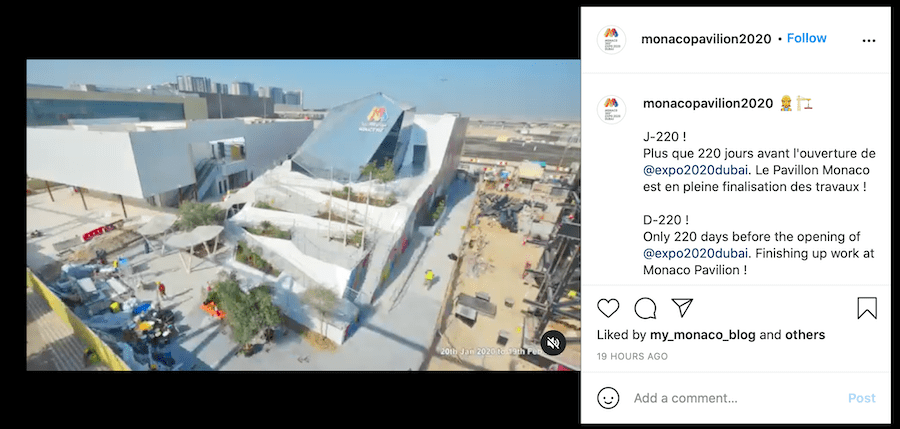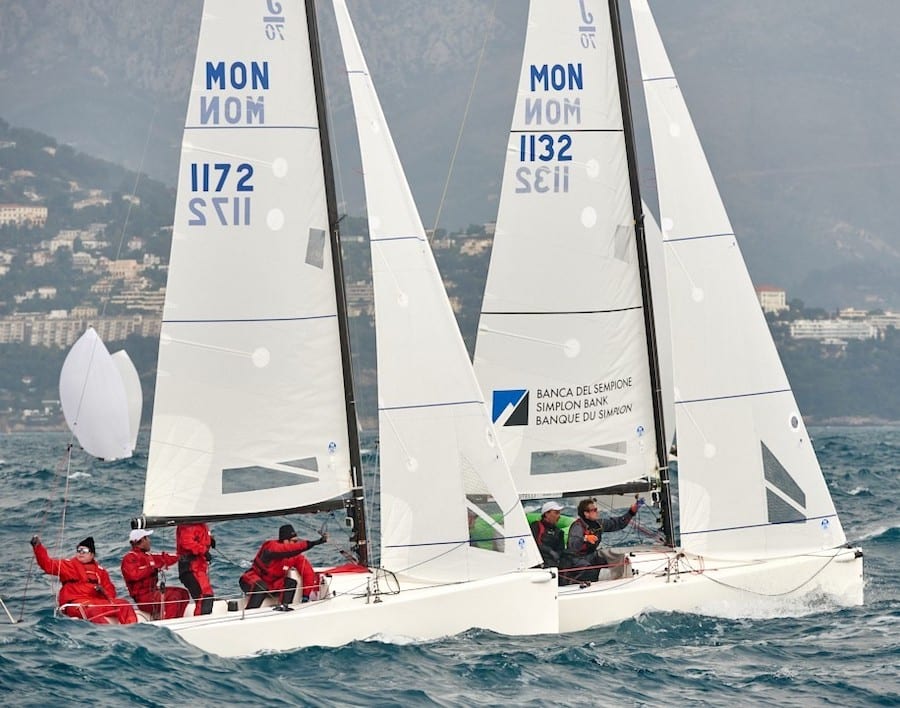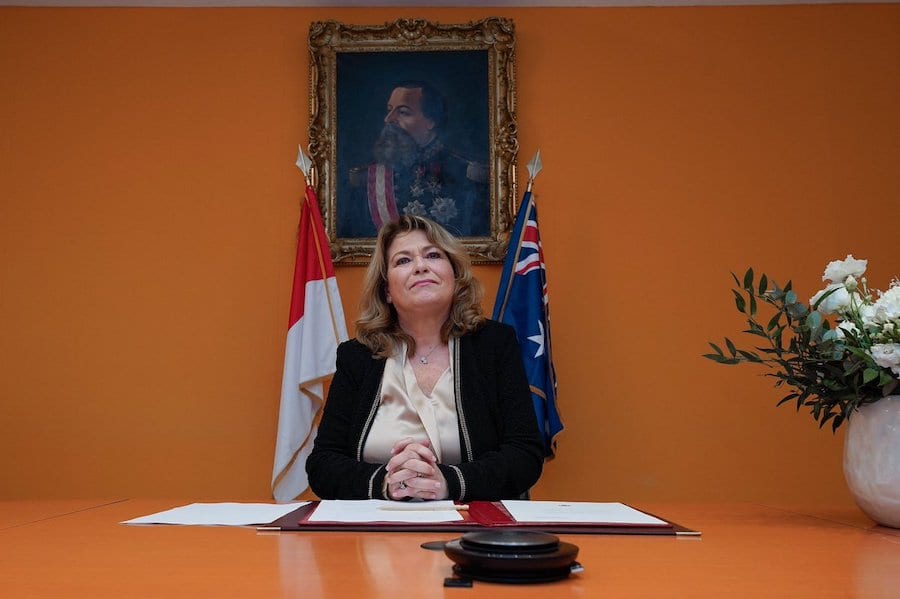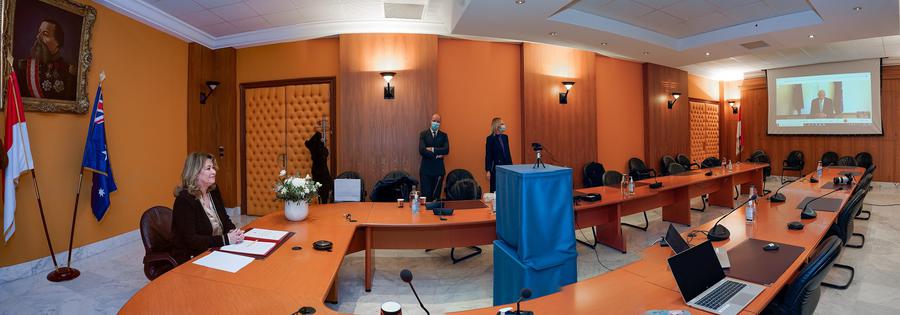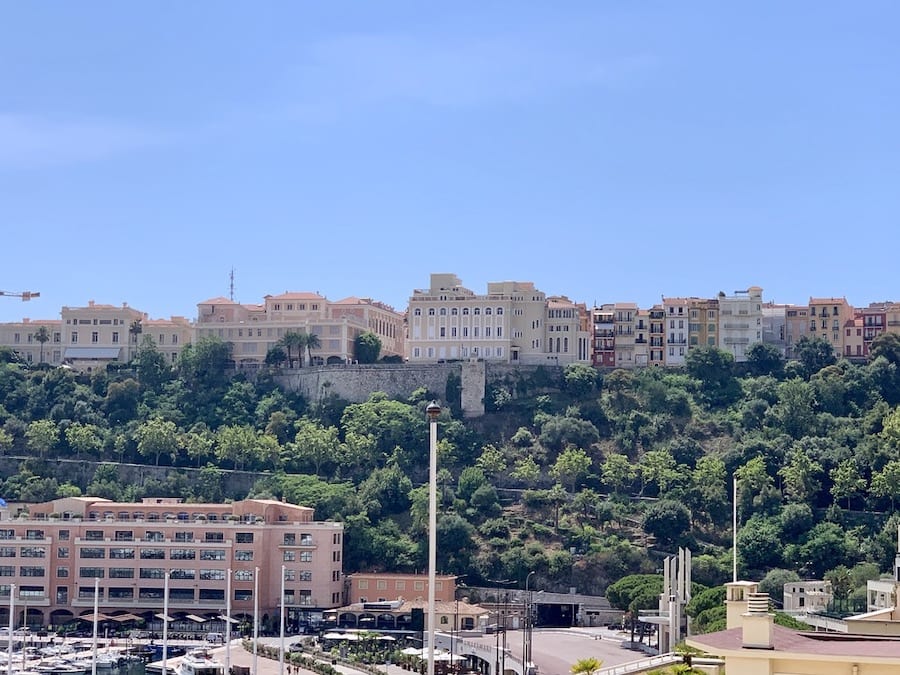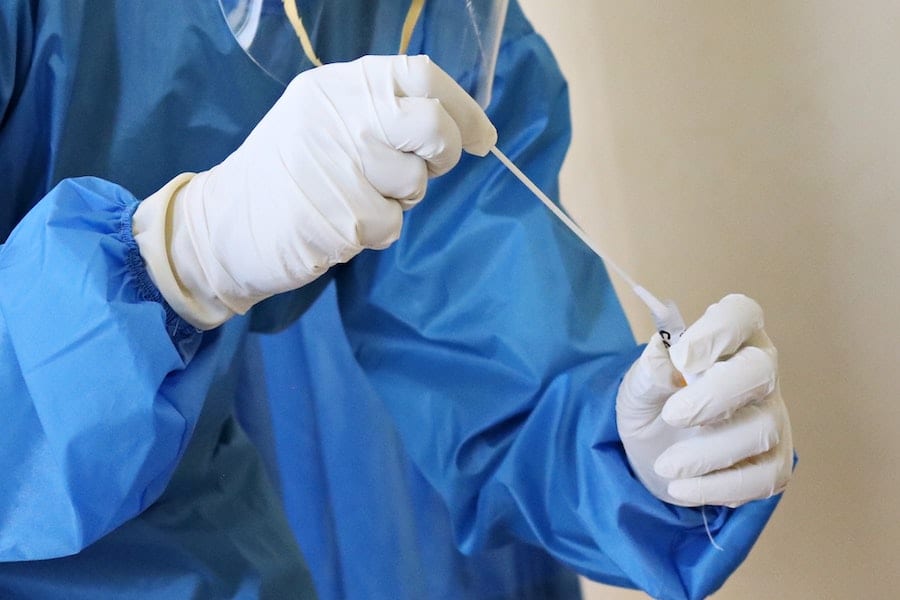Finishing touches are being applied to the rock-inspired Monaco Pavilion in Dubai. With months to spare before the World Expo kicks off this October, Monaco will be among the first countries to complete the mammoth project.
For the first World Expo organised in the Middle East, Monaco has chosen to showcase the many facets of its national identity inspired by the Rock, a 62-metre monolith that overlooks the Mediterranean and houses, most famously, the Prince’s Palace and the Oceanographic Museum.
In Dubai, the Rock is a more reasonable 14-metres high, and is now fully equipped with photovoltaic panels. The pavilion was connected to the city of Dubai’s grid at the beginning of December and is completely energy self-sufficient.
The entire external lateral facades have been covered in French Riviera-inspired Harlequin vinyl, while the Rampe Major, symbolising the winding and narrow streets of Monaco, leads up to the first floor of the pavilion which officials say is ready to welcome its first visitors.
The landscaping around the pavilion is also said to be nearing completion with almost all of the Mediterranean greenery installed.
“Amongst them, an ancient olive tree was planted right by the entrance of the pavilion, opening the doors of Monaco, the gem of the French Riviera,” said officials.
The offices and staff area are completed, and the interior fittings are scheduled for the spring.
Monaco is expected to be one of the first countries to receive the ‘Building Completion Certificate’.
After its initial postponement from October 2020, the World Expo Dubai will be held from 1st October 2021 to 31st March 2022.
More than 192 participating countries will showcase their uniqueness under three themes: Mobility, Opportunity and Sustainability.
‘Monaco 360° – a World of Opportunities’ will be located within the Opportunity District
Related stories:
Monaco will finish pavilion, despite postponement
Looking ahead to Expo 2020 Dubai

